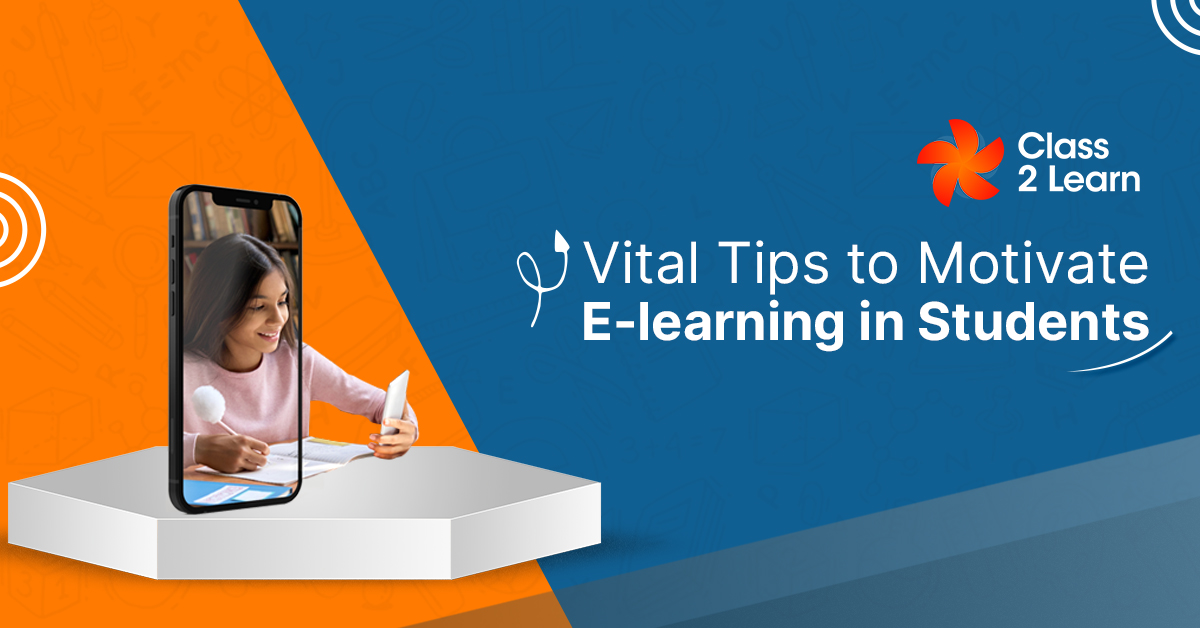
7 Vital Tips to Motivate E-learning in Students

Across the world, many countries are getting prepared for the upcoming school year. Even many institutions that had previously made the decision to hold live classrooms have either rapidly closed or developed an online learning environment for their students and ardent learners.
When schools were closed for the first time in March 2020, teachers and school management officials were unprepared, but now everyone can be ready for virtual school. You may take a few actions to boost the efficiency of the experience for your students.
By implementing these 7 suggestions, you may advance e-learning.
- Whenever possible, try to record the lessons:
Plan to record your classes as often as you can, while certain schools could have restrictions on what you can record and there can be technical challenges due to obsolete software. There are several benefits. For instance, learners who are not able to take the class due to illness can access the video whenever they choose. Those who do show up to class may view some of it again to replenish their memories and comprehend the subject matter better.
Even more, some teachers have mandated that video recordings be a part of the online learning process. After watching the movie outside of class, the students spend time during class discussing it and doing their assignments.
- Focus on Personal connections:
Social isolation is difficult for folks of every age and ethnicity, but it is especially difficult for children and teens who depend on their classmates for support. Providing your students time to develop personal relationships is one of the most crucial things you can do right now.
A well-assigned team work or group study projects that, for example, enable learners to collaborate with one another can greatly help. You should also take a moment checking in with each of your students to check that they are learning. These are little adjustments, but they may have a significant influence on your learners’ mental wellbeing.
- Making short presentations:
Most people can only focus for about 20 minutes before becoming bored or distracted. With younger learners, particularly those who learn via video, this limited attention span becomes even shorter.
Consider different ways to break up your presentations. You could give a 10-minute lecture followed by a 5-minute activity. You can also use music, videos, games, and fun quizzes to keep your students’ attention.
A lecture is the simplest way of communicating information virtually, but it does not guarantee a positive e-learning experience.
- Conveying information in a variety of ways:
In a typical learning setting, your students can request you to clarify topics or offer additional context. This may not be practicable in the case of online learning.
You may deliver information in various ways so that learners with different learning styles can understand it. Keep the lesson accessible in a number of forms as well. It might be as simple as downloading each lesson’s transcript. You may also share your PowerPoint presentations, give supplementary learning tools to students, and post your notes to support students and their parents practice together.
Provide learners with as many as possible resources to assist them in obtaining the knowledge they want.
- Ensure assignments are done virtually:
Not all assignments are transferable to the online classroom. Something that appears to work well through video may be extremely complicated or require funding that pupils do not have.
If you’re unsure about a task, run it by another teacher. If you can’t explain how it works clearly or your “volunteer student” is unable to complete the activity, you must alter it or delete it from the lesson.
Also, keep in mind that your students may not have certain products at home. Consider your students’ financial situations before needing them to buy mini-whiteboards or other items that are just not crucial for the educational process.
- Search for free resources:
If you must substitute a virtual option for a lesson plan, look for resources that are free to both students and teachers. WeAreTeachers’ staff compiled a list of over 350 online courses.
Hundreds of exhibitions, galleries, learning startups, writers, and toy manufacturers have created online content and provided it free for learners. You can utilize these content resources to provide your study material for your lectures and actively engage your students without using physical items.
Make sure that you first test these internet sites and tools. If the material is of poor quality, there is no reason to include it in the lesson and introduce potential distractions.
- Gather feedback from parents and students:
Even if you create one-of-a-kind virtual lesson plans and work hard to lead your classroom better than you ever imagined, there will always be scope for improvement. This year, stay optimistic and pay attention to what your students have to say regarding your instruction.
For example, you can use Jotform to create a feedback form where students can tell you if they have issues with the tasks or don’t understand the content. You can post the survey results to parents and get their feedback and make changes based on their feedback.
Jotform can also be used by school administrators to collect feedback from teachers and parents. During these uncertain times, clear communication is critical, and we’re all learning together. Even if it’s just an acknowledgment, each opinion poll or request for comments should really have a clear goal and duration response.
Everyone wants the pandemic to end so that life can return to normal and children can play without masks. However, for the time being, it is critical to make the best of a bad situation and ensure that the e-learning interaction is as helpful as possible.
Conclusion:
E-learning is becoming more popular in tertiary education. All available evidence points to rising enrolment and provision, albeit from a low base. There are four e-learning secrets. The first secret is to teach what learners need to know in the way they learn best. The second secret is to establish specific learning objectives. The third secret is built on the first two secrets. It is to concentrate on the right goals. The final key is found in the power of testing.





